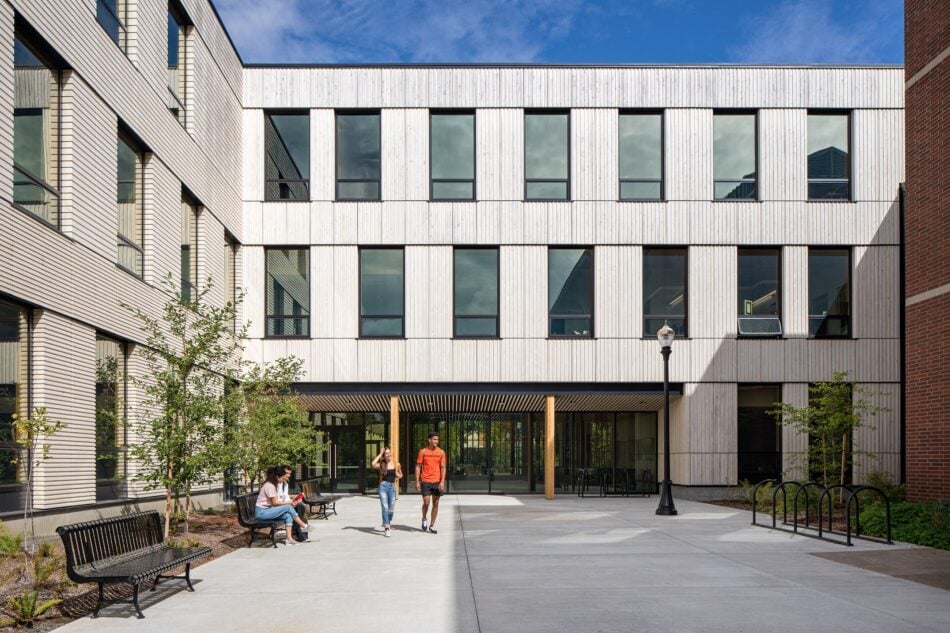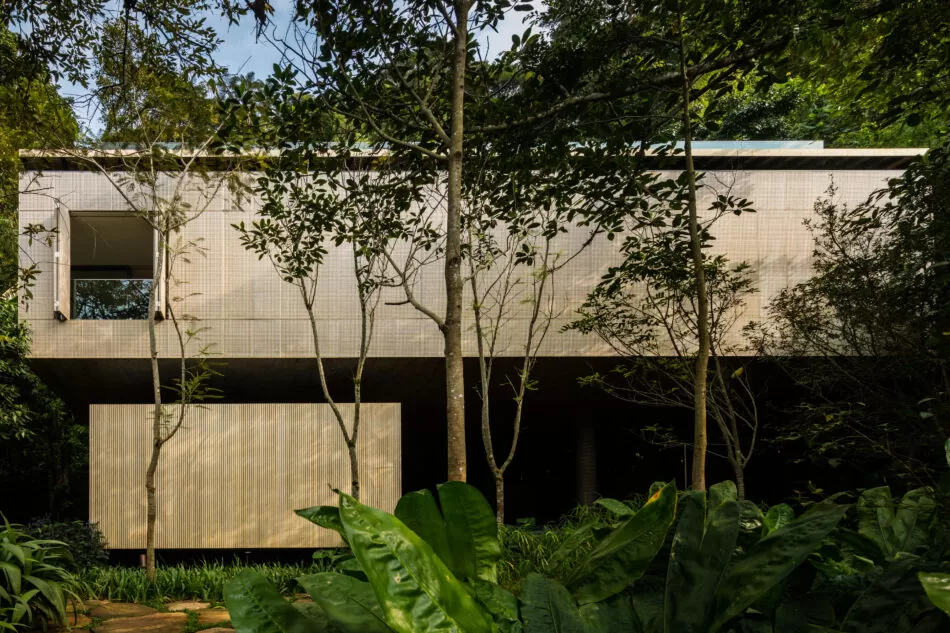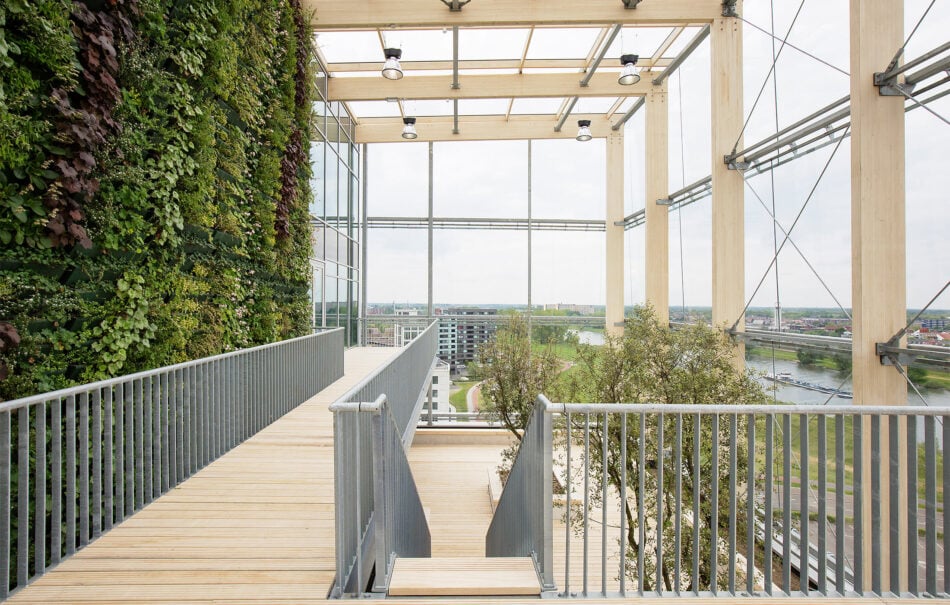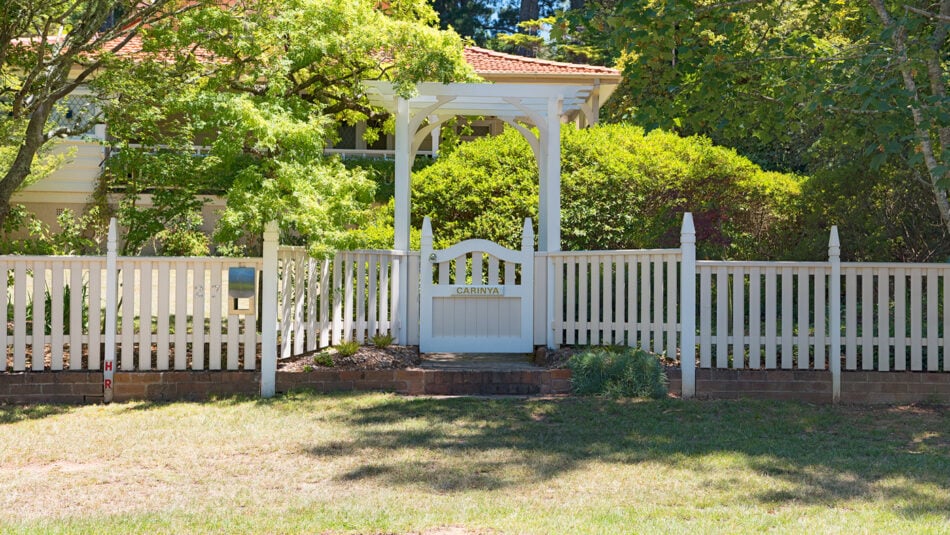Predictions for Sustainable Building in 2022
What will characterise our sustainable cities of the future? In 2020, at 149 exajoules (or 149 quintillion joules), energy consumption for the construction and operation of buildings totalled 36 percent of global energy demand. Down from a peak of 150 exajoules in 2019, it is likely that pandemic lockdowns played a part in this reduction. Now, at a time when the world seems to have stood still for so long, we are beginning to allow ourselves to look forward and ponder on the shape of our future, and the general consensus is that this will begin with growth. As economies emerge from the pandemic, most believe that construction output will return to pre-COVID levels over the next year, and we have an opportunity to ensure that growth is sustainable. Below are our four key predictions for how this might look.
10.01.2022

Sustainable Building Materials
Actively guiding the construction industry towards a more sustainable path will not only ensure compliance with tightening green regulations, but improve brand image in an era where sustainability is king. A key consideration is reduction of waste and a more carefully considered stance on the materials we are using. Given that 11% of the energy and process-related carbon dioxide emissions from the buildings and construction sector in 2018 stemmed from manufacturing materials such as steel, cement, and glass, it makes sense to consider a move towards an altogether more eco-friendly choice: wood.
An inherent part of the natural environment, bringing sustainably sourced wood into our built environment champions nature and its fundamental biodegradability, allowing us to balance the need to provide for a growing population with the need to ensure the climate resilience of its future. In fact, the global green building materials market size is expected to have reached USD 364.6 billion by 2022. Of course, in this we must also step away from treating these materials with toxic paints and finishes, ensuring that they are truly biodegradable, and can safely be returned to nature at the end of their life.

Lifelong Wellbeing
Considering the return of wood to nature leads us on to the next key prediction, lifelong wellbeing. We must now be mindful of the entire lifecycle of the materials and building process and, beyond this, the health and wellbeing of those that work on and live in the buildings we erect. The World Green Building Council’s Six Principles for a Healthy, Sustainable Built Environment underlines the importance of the relationship between sustainable development and human wellbeing, detailing how harmony with nature and climate change action is linked to social values, including the health of construction workers. Buildings made of wood have seen not only construction time, effort, and waste reduced by as much as 90%, but have had a positive impact on construction workers, whose exposure to the dust and toxic fumes of a regular building site is drastically lowered. Furthermore, timber buildings continue to have a positive impact on people throughout their lives as wood surfaces have been found to lower stress levels, improve attention and focus, and increase creativity. With the difficulty of the preceding two years, a movement towards design that benefits wellbeing is likely to be at the forefront of many minds.

Biophilic Design
Fundamental to development that centres itself upon wellbeing, is biophilic design. Biophilia, the human tendency to interact and be close to nature, is increasingly being integrated into architecture as we recognise the health benefits that come from a connectedness with the natural world. In fact, in the World Green Building Council’s principles mentioned above, biophilic design is a key tenet of ‘Harmony with Nature’. Not only can we achieve this through the use of wood, which is seen to bring a number of health benefits in itself, but through expanding this by bringing green in.

Net Zero Is Not Enough – Positive Is The New Neutral
Our final prediction is that net zero emission targets will no longer cut the mustard. With several governments and large companies committing to net zero targets, reducing emissions is a global target. However, with increasing pressure from those who recognise this may no longer be enough, we believe there will be a push towards climate positivity: removing more greenhouses gases from the atmosphere than are released. In an industry that is responsible for a large portion of global emissions, we think companies have started to notice the scale of the positive impact we could have if we pushed for these more ambitious targets.

How Does Accoya Align With These Predictions?
At Accoya, sustainability has always been at the heart of what we do. Our products are made out of FSC certified timber grown in well-managed forests that protect the surrounding natural biodiversity. Modified through a process of acetylation, which does nothing more than alter than existing natural compounds of the wood, it becomes more durable, stable, and better performing without the addition of a single toxic chemical. This ensures that not only is its life lengthened, but when this eventually comes to an end, the timber is completely biodegradable or recyclable. As if this wasn’t enough, by the end of their life Accoya timber windows and doors will have helped to remove CO2 from the atmosphere. That’s right, they’re climate positive. So, whilst sustainable materials, lifelong wellbeing, biophilic design, and climate positivity are set to be the four new sustainable building trends of 2022, we hope that by fulfilling every one of these, Accoya becomes the fifth.
References
2021 Global Status Report for Buildings and Construction – Global Alliance for Buildings and Construction & United Nations Environment Program
2019 Global Status Report for Buildings and Construction – Global Alliance for Buildings and Construction & United Nations Environment Program
https://www.thestablecompany.com/blog/8-ways-timber-can-benefit-our-health-the-research
https://worldgbc.org/health-framework
https://www.grandviewresearch.com/press-release/global-green-building-materials-market
https://www.glenigan.com/construction-output-predicted-to-return-to-pre-covid-levels-by-2022/
https://www.thestablecompany.com/blog/8-ways-timber-can-benefit-our-health-the-research
WHERE TO BUY ACCOYA
for your next projectWhat type of Product are you interested in?
- - Select product type -
-
FIND A SUPPLIER
FIND A INSTALLER
for your next projectWhat type of are you interested in? (optional)
How will your be used?
- - Select type -
-
You are currently on the Accoya site
Would you like to visit the Accoya Site to view all relevant content for your location?